An important factor which has been ignored by most students of history of the 1962 India-China War, is the ‘Tibetan factor’. It greatly hampered the PLA in scoring a more decisive victory over India.
In early 1962, the population of the high plateau had begun showing strong signs of discontent. It manifested in a 70,000-character petition sent by the Panchen Lama, then the senior most Lama in Tibet, to the Chinese Premier Zhou Enlai in April 1962.
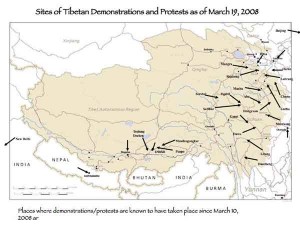 In this context, it is interesting to look at the record of unrest in Tibet. The history of China is itself a string of rebellions and revolutions. Let us not forget that the possibility of smooth and consensual resolution of important issues has historically been absent in China. In a democratic system, elections are often the security valve. The possibility of social unrest, uprisings and even rebellions or revolutions will therefore continue to loom large on the horizon of the Middle Kingdom.
In this context, it is interesting to look at the record of unrest in Tibet. The history of China is itself a string of rebellions and revolutions. Let us not forget that the possibility of smooth and consensual resolution of important issues has historically been absent in China. In a democratic system, elections are often the security valve. The possibility of social unrest, uprisings and even rebellions or revolutions will therefore continue to loom large on the horizon of the Middle Kingdom.
Unrest is the only way by which resentment against local or central policies can manifest in today’s China.
On March 10, 1959, the Dalai Lama was ‘summoned’ by the Chinese General commanding the PLA in Lhasa to attend a play inside the Chinese camp. On learning that he was asked to come ‘without escort’, the entire population of Lhasa revolted and decided to protect him. It was the first large-scale upspring after eight years of colonization (the PLA entered Lhasa in September 1951). A week later the Dalai Lama, escorted by a band of some 200 brave Khampas, took the road to exile in India.
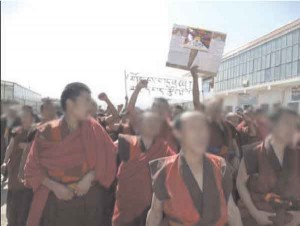 Three years later, when the Panchen Lama wrote the above mentioned petition, it came as a surprise to the Chinese who thought they had ‘stabilized’ the situation. In September, one month before the war, during a CCP Conference, Mao denounced the ‘poisonous arrow’ sent by the Lama and called him ‘an enemy of our class’. But the mere fact that the Panchen Lama, a moderate who had always been chaperoned by Beijing could write such a long critical letter showed the hostility of the local people against the forced occupation of their land. In these circumstances a longer war with India would have certainly been difficult to sustain in the atmosphere of ‘rebellion’ prevalent on the Roof of the World at that time.
Three years later, when the Panchen Lama wrote the above mentioned petition, it came as a surprise to the Chinese who thought they had ‘stabilized’ the situation. In September, one month before the war, during a CCP Conference, Mao denounced the ‘poisonous arrow’ sent by the Lama and called him ‘an enemy of our class’. But the mere fact that the Panchen Lama, a moderate who had always been chaperoned by Beijing could write such a long critical letter showed the hostility of the local people against the forced occupation of their land. In these circumstances a longer war with India would have certainly been difficult to sustain in the atmosphere of ‘rebellion’ prevalent on the Roof of the World at that time.
At the end of the seventies, the Communist regime was under the impression that the ‘backward Tibetan people’ had finally been ‘liberated’. When they were informed about the forthcoming visit of the Dalai Lama’s delegates coming from India, local Communist authorities briefed the Tibetan population in Lhasa: “You should not resent this visit. You should not insult the delegates; you should not spit on them, just receive them as your own countrymen.”
The Chinese learned their lesson. Surveillance with sophisticated video cameras was strategically installed all over Lhasa and other large cities in Tibet.
They had however misread completely the people’s feelings, and their deep resentment. Three delegations visited Tibet between 1979 and 1982. Wherever the Dalai Lama’s envoys went, they were mobbed by crowds of Tibetans. One delegation member remembers: “The Tibetans tried even to tear our chubas (Tibetan dress) to have them as relics”. The entire Lhasa population was on the streets; everybody wanting a darshan of the Dalai Lama’s envoys.
It was riots of another kind.
In September 1987, a few days after the Dalai Lama presented his Five-Point Peace Plan to the US Congress in Washington DC, riots erupted again in the Tibetan capital. Like in 1959, they were restricted to Lhasa. Unrest continued sporadically during the following two years, which further deteriorated in March 1989. One of the reasons was that a hardliner, a certain Hu Jintao, had been nominated the Party Chief for Tibet. After the massacre of more than 400 Tibetans on the Bakhor (Parikrama) of the Central Cathedral on March 6, Martial Law was imposed for a year.
The Chinese learned their lesson. Surveillance with sophisticated video cameras was strategically installed all over Lhasa and other large cities in Tibet. This did not stop 500 monks of the Drepung monastery from demonstrating on March 10, 2008. They were commemorating the 49th anniversary of the 1959 uprising.
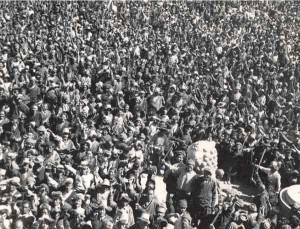 They were followed by 14 monks of Sera Monastery who marched towards the Jokhang Cathedral the next day. As the repression mounted, more and more people including monks joined. This culminated with thousands descending in the streets on March 14. More than 100 causalities and thousands of arrests were reported according to Tibetan sources.
They were followed by 14 monks of Sera Monastery who marched towards the Jokhang Cathedral the next day. As the repression mounted, more and more people including monks joined. This culminated with thousands descending in the streets on March 14. More than 100 causalities and thousands of arrests were reported according to Tibetan sources.
During the next few days, the unrest spread to the whole of Tibet. This was the first time in the history of Tibet since 1950 that the three traditional provinces were aflame.
Interestingly, while details of the riots of 1959 and 1989 were known months later, this time, thanks to mobile phones and other video cameras (though calls to India were monitored by the Public Security Bureau), hundreds of photos and many videos reached India and the West. They later circulated on different websites.
Strategically, the recent events in Tibet show the weakness of the Chinese colossus which has not been able to ‘liberate’ the Roof of the World. On the contrary, the regime has created more and more resentment amongst the Tibetan population. In case of a conflict, this resentment could certainly be a determinant factor.




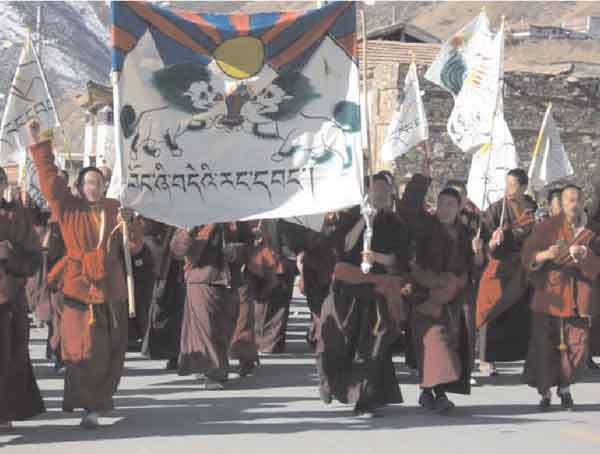
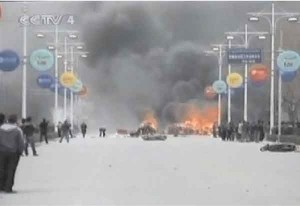

Dear Mr Arpi I follow most of your articles and appreciate that that you are more vociferous then most of the Indians but one thing be rest assured Indians whole heartedly support the cause of Tibetans you keep on prodding us and one day we will see Tibet liberated
None of us can tell who is lie who is not, u r considering pepole in Tibet, I am considering the pepole as well, what can bring them a better life?what they want?Peace and development.Don’t talk about the human rights so loud here, think about what the western done in middle east first!!! Also, does the Tibet issue really have a matter to the Olympic? Stop it then what can those Chinese get for all their effort? Do u know how many ppl r expeccting the Beijing2008? Who will stand out for them? we don’t know politics, we just want peace and a success Olympic, why we can’t stay where we r and do our own stuff instead of creating a new war in words?